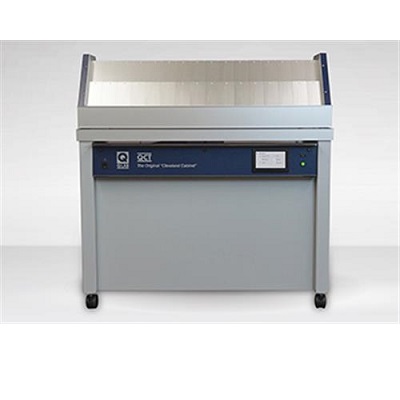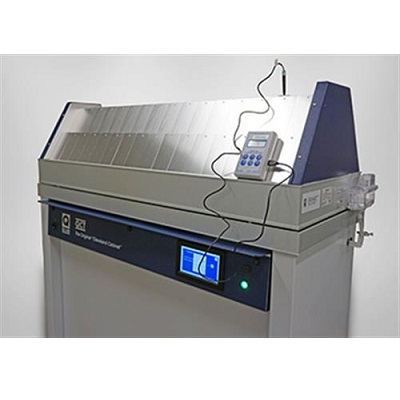The QCT condensation tester simulates the damaging effects of outdoor moisture attack by condensing warm water directly onto test specimens. In a few days or weeks, the QCT tester can reproduce the damage due to moisture that occurs over months or years outdoors.
The QCT tester is fast, easy to use and affordable. It uses 100% condensing humidity to simulate and accelerate damage caused by rain and dew on metals, paints, and organic materials. It accelerates over natural exposures by increasing moisture temperature. The QCT tester replaces water immersion and ordinary (non-condensing) humidity tests.
The QCT condensation tester is used in thousands of labs in over 50 countries. It is the simplest, most reliable, and easiest to use condensation tester available.
Effects of Outdoor Moisture
Water is a common enemy to most materials. It causes metals to corrode, organics to decompose, and structures to disintegrate. Condensation is water that has been distilled from impure water, mixed with the atmosphere, and saturated with oxygen. This type of moisture has also been called “aggressive water”, because it carries oxygen with it as it contacts a material or diffuses through a coating. Studies show that materials outdoors are exposed to an average of 12 hours per day of condensed water in the form of dew.
The QCT Condensation Tester
The QCT tester uses 100% condensing humidity to simulate and accelerate damage caused by dew on metals, paints, and organic materials. It accelerates over natural exposures by increasing moisture temperature.
The QCT tester requires only ordinary tap water. This is because the tap water becomes pure distilled water in the process of evaporation from the water pan and condensing onto the specimens.
The tester’s innovative design utilizes room air cooling to create a temperature differential across the thickness of the specimens. This temperature differential is a necessary element for condensation to occur. It is important to note that the QCT tester is fundamentally different from a typical humidity tester.
Variable Exposure Cycles
The user is able to program the QCT tester to create static, 100% condensing humidity or to cycle between hot condensation and dry-off. The temperature’s range extends from room temperature to as high as 70 degrees Celsius. The system allows for the selection of almost any desired wet/dry exposure cycle through an automatic cyclic timer. The cycle options range from the subtle wetness of an almost invisible dew a few degrees above room temperature, to a continuous, high-temperature, running condensate.
Freezing accelerates some failures. For a freeze/thaw cycle, panels can be manually removed from the QCT while wet and immediately frozen, and then reinserted into the tester.
Fast and Versatile
The QCT tester can be used to:
- screen paints for blister resistance over a weekend at 55 degrees Celsius
- evaluate oil-based rust inhibitors in less than 120 hours at 38 degrees Celsius
- rate effectiveness of mill-applied oils in only a day
- test surface reactivity of cold-rolled and galvanized steel in hours
- test wood finishes for blistering, moisture and mold resistance
Easy to Use, Simple to Install
The QCT tester provides instant blister or corrosion testing – just plug it in and add water. The unit can be placed anywhere in your office, lab, or plant. The heat and water vapor produced by the QCT tester is about the same as that produced by one additional person in the room. Also, the test panels on a QCT unit may be inspected as often as you want, without altering test conditions. Just remove the panel and put a blank in its place.
Standards
The QCT tester conforms with several standards, including:
- ASTM D4585, Testing Moisture Resistance of Coatings with Controlled Condensation
- ISO 6270-1, Paints and Varnishes – Condensation (single-sided exposure)
- ISO 6270-2, Paints and Varnishes – Condensation (in-cabinet exposure with heated water reservoir)
- BS 3900, Part F9, Determination of Resistance to Humidity (Continuous Condensation)









